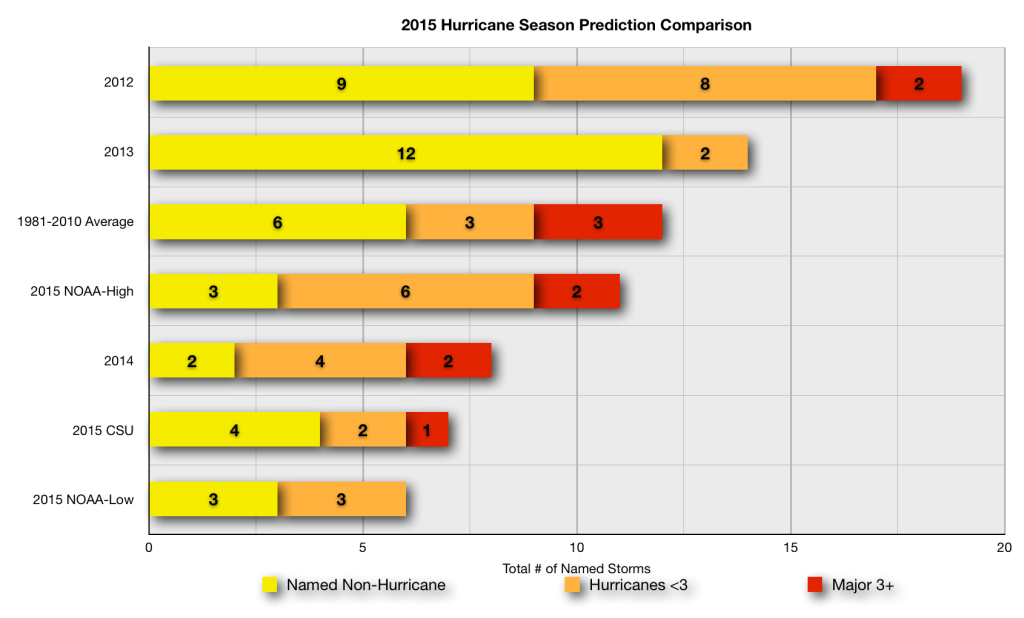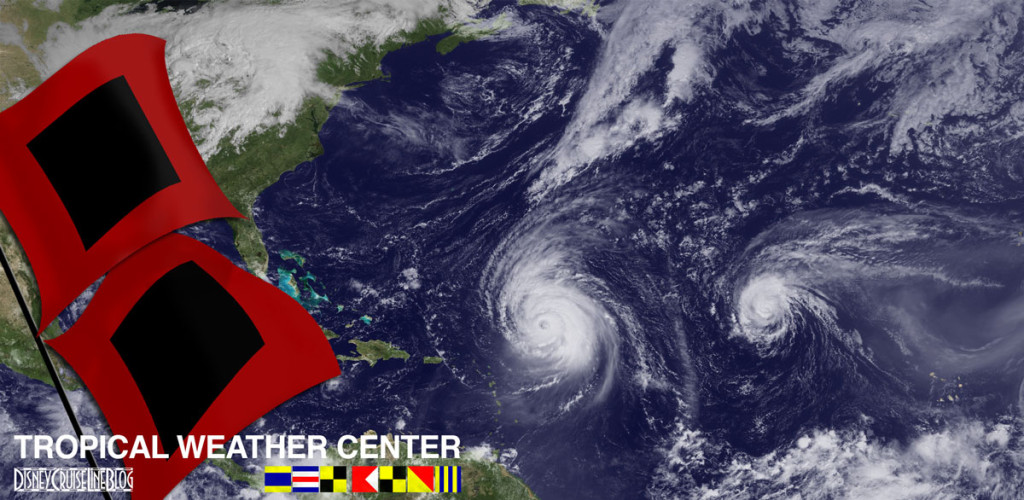Today marks the official start of the 2015 Atlantic Hurricane Season which will continue through November. Just last week, the National Oceanic and Atmospheric Administration (NOAA) published their outlook for the 2014 Atlantic hurricane season. NOAA predicts that the 2015 Atlantic basin hurricane season will be below normal, but this doesn’t give reason to believe coastal areas will have it easy. According to NOAA’s Climate Prediction Center, there is a 70% chance of 6 to 11 named storms with 3 to 6 of those becoming hurricanes with 0 to 2 major hurricanes (category 3 or higher). There is a 20% chance of a near-normal and 10% chance of an above normal hurricane season.
Below is a comparison of the NOAA and Colorado State University’s predictions along with the 1981-2010 average and final numbers for 2012-2014. As you can see, the predictions are all under long term average. Additionally, CSU’s and NOAA’s low end 2015 predictions are below the 2014 hurricane season tally.
The main factor expected to suppress the hurricane season this year is El Niño, which is already affecting wind and pressure patterns, and is forecast to last through the hurricane season,” said Gerry Bell, Ph.D., lead seasonal hurricane forecaster with NOAA’s Climate Prediction Center. “El Niño may also intensify as the season progresses, and is expected to have its greatest influence during the peak months of the season. We also expect sea surface temperatures in the tropical Atlantic to be close to normal, whereas warmer waters would have supported storm development.”
El Niño – La Niña Influence on Hurricane Season
El Niño is a 12-18 month period with warmer sea surface temperatures occur in the eastern half of the Pacific Ocean near the equator. El Niño favors stronger hurricane activity in the central and eastern Pacific Ocean, and suppresses activity in the Atlantic Ocean. Moderate to strong El Niño events are irregular, occurring maybe once every 3 to 7 years. In contrast, La Niña suppresses hurricane activity in the central and eastern Pacific Ocean, and enhances development in the Atlantic Ocean. For more on the the subject check out a great article from 2014 at Climate.gov.
2015 Atlantic Basin Tropical Cyclone Names
- Ana
- Bill
- Claudette
- Danny
- Erika
- Fred
- Grace
- Henri
- Ida
- Joaquin
- Kate
- Larry
- Mindy
- Nicholas
- Odette
- Peter
- Rose
- Sam
- Teresa
- Victor
- Wanda
- Followed by the greek alphabet, if needed.
It is important to keep in mind that this annual forecast is a prediction, not what will happen. Mother Nature can, and will do whatever she wants and even the best forecast models will be thrown for a loop. It is imperative to stay alert in the event a system develops and for those living in coastal areas to be prepared.
We will continue to track tropical systems that have the potential to impact cruise itineraries as well as frequent Caribbean and Bahamian ports of call. We strive to provide accurate and updated information, but ultimately the best source of up to date information on these systems the National Hurricane Center and your local National Weather Service offices. Basically, what I am saying is that we should not be used as official forecast information. The goal is to share the information from the NHC and how it relates or impacts it may have on the sailings and ports of call.




